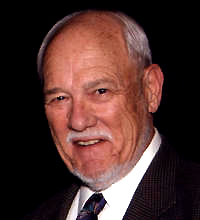 By ANDY ANDREWS
By ANDY ANDREWS
Los Alamos World Futures Institute
An Introduction
The Los Alamos World Futures Institute is a start-up, not-for-profit organization focused on identifying needs for Earth and Humanity. While time horizon is infinite, the practical horizon is much shorter, defined by where we are and where we are going. The identification of needs can contribute to the entrepreneurial spirit of Los Alamos and other locales but, more importantly, can ensure a better future for ourselves and our posterity. Let us get started.
Often men and women collectively have attempted to project requirements or needs for something many, many years into the future. In doing this, it is often unclear the purpose of the projections, why they are being made, and what value they have. In a probably superficial examination of these efforts, it appears as an attempt to identify what needs to be explored in scientific domains and establish justification for supporting scientific exploration. While such efforts are laudable in identifying what needs to be known, initiation of the journey is usually lacking because the time horizon of the effort is too long for the penchant of human consideration.
Consider a need 200 years in the future and a typical human being: average life expectancy 80 years; development time to reasonable productivity 25 years; pasture time 10 years; “productive” time 45 years. And during this time span the individual must climb Maslow’s Hierarchy of Needs, with survival at the first level of the hierarchy. The individual is forced to focus on the nanocosm of its existence.
This is the situation the modern entrepreneur is facing; satisfying basic human needs while tending to the longer term needs of potential customers. Moreover, the customer is identifying needs within the customer’s nanocosm. In 1908, Henry Ford’s Model T made its debut. By 1914, Ford could claim a 48 percent share of the automobile market.
Customers bought the Model T because it was affordable and it satisfied a perceived need. Did the customers have a concern about global warming? No! While one can argue that global warming was not understood at the time, the perceived short-term benefits, those within the customers’ needs horizons, overshadowed any perception of long(er) term consequences. Yet the introduction of affordable transportation that fundamentally changed the time envelope also altered the fundamental envelope of human existence.
Henry Ford did not invent the automobile, but he did create a method or technique to reduce the manufacturing costs and increase the efficiency of its production. Thus the satisfaction of a need by the consumer became more widely attainable. As an entrepreneur, Henry Ford saw an obvious need and found a way to satisfy that need affordably.
Working in his own nanocosm, Ford observed the greater societal need and developed a method for near term satisfaction. As an alternate approach, Ford could have waited for the 2008 Model T itself to be ready for market. Obviously, such a decision would have been foolish.
Entrepreneurs must produce a product (or service) needed now that also contributes to satisfying long term human needs or requirements if the entrepreneur is going to create an opportunity for continued need satisfaction. As an example, the Pet Rock satisfied (maybe) a short term emotional need of some people and then faded. Also, computer apps today focus (for the most part) on a single task or function based on replication of an old tool in new form or some perceived short term need. Ford’s innovation was in a long term need domain (individual transportation) with a sustainable solution (an affordable motor vehicle).
In essence, long term successful entrepreneurship is a process that generates continuing income and personal rewards for the entrepreneur by satisfying human needs of the consumer. At the very highest level of amalgamation, this might be defined as sustaining human life and the human species forever (and that’s a very, very long time) while addressing short term (a very vague time period) essentials. Clearly, this does not mean the successful entrepreneur must visualize to the end of time, but it does help define domains for creativity with a greater probability of success.
A brief pause is appropriate to consider the term “entrepreneur.” As commonly used today, the term refers to an individual with a motivation to create a business that will reward the individual with compensation for his or her effort in delivering a product to the consumer. The consumer acquires the product to satisfy a NEED. In this brief description note the vague words including individual, business, compensation, and NEED.
The articles that will follow in the weeks ahead are based on the assumption that needs must be defined for the world and for humanity. The world is defined as the place where humanity exists or ceases to exist. Humanity is the collective body of human beings we refer to as us.
Future articles will be subdivided into four arbitrary categories:
STUFF: Physical things that are created, controlled, or manipulated by members of humanity.
PEOPLE: Living human beings (entities) collectively described as humanity.
INFORMATION: The data, information, and knowledge that provides for the development of humanity and interaction among its entities.
SOCIETY: The controlling structure and processes that permit or undermine interaction between and among the entities of humanity.
The Los Alamos World Futures Institute website is LAWorldFutures.org. Feedback, volunteers and donations (501.c.3) are welcome.
For more information, email andy.andrews@laworldfutures.org or bob.nolen@laworldfutures.org.
Previously published columns can be found at www.ladailypost.com or www.laworldfutures.org.

